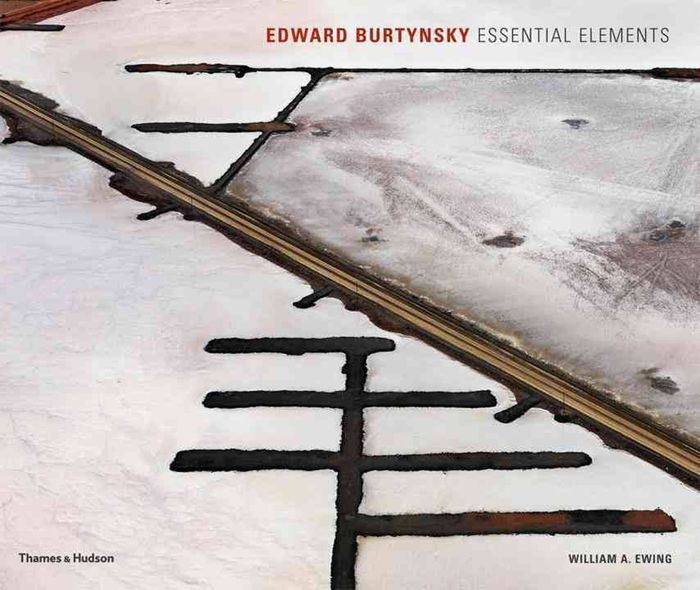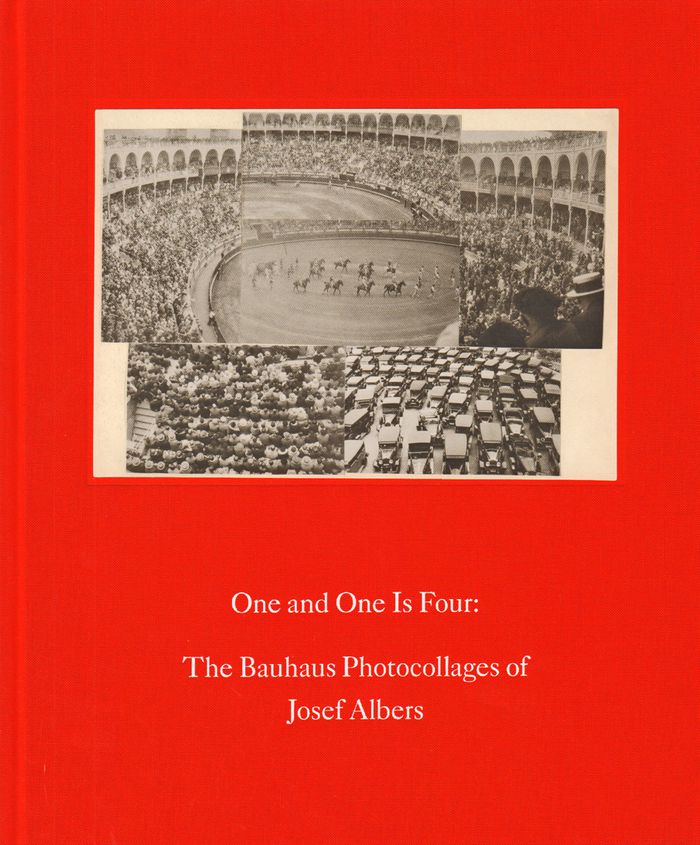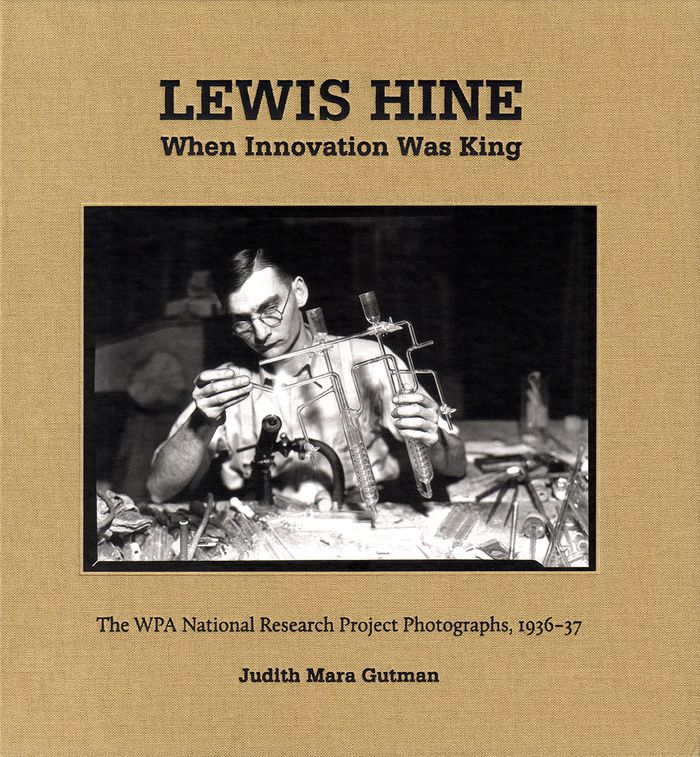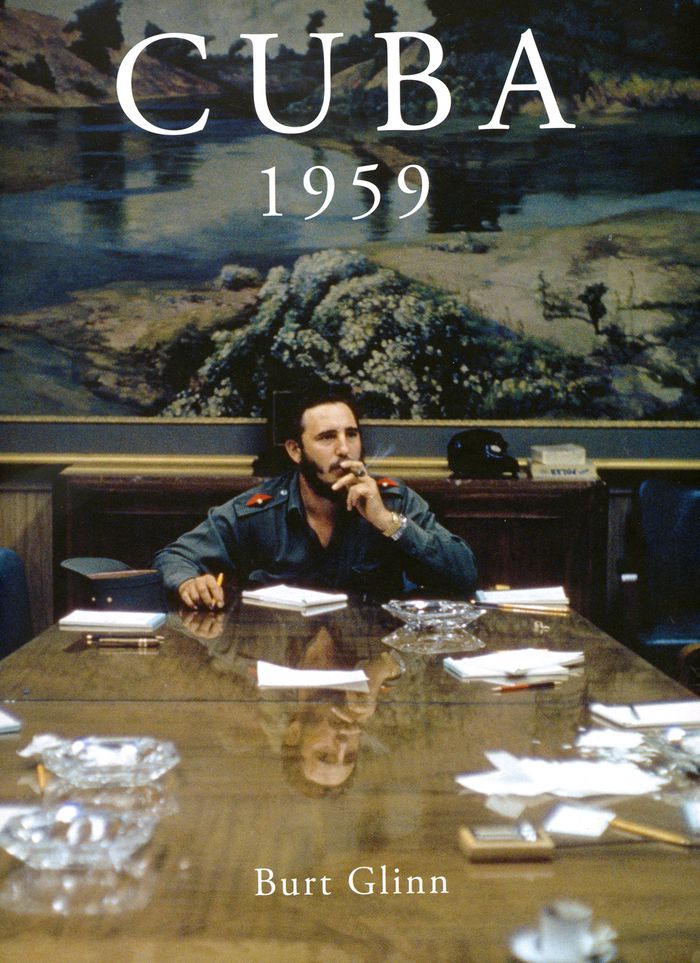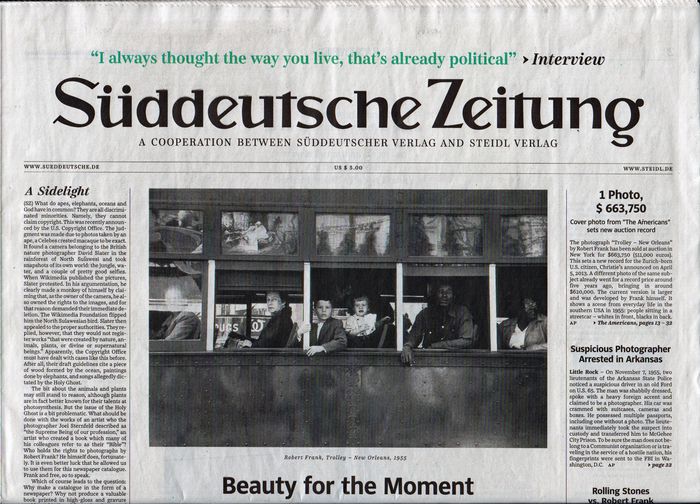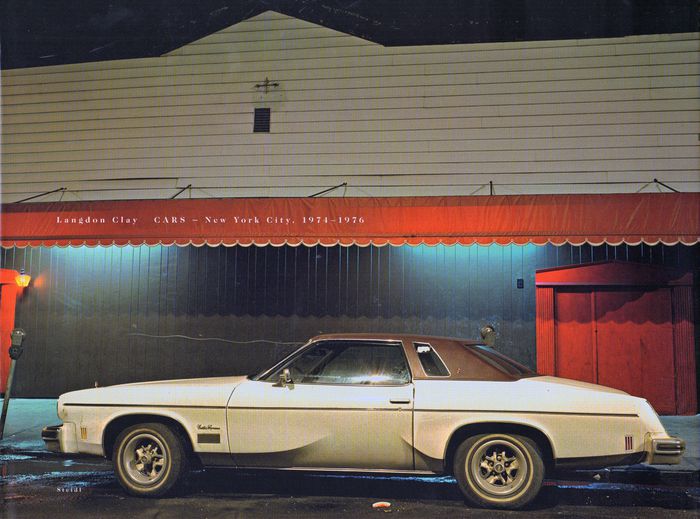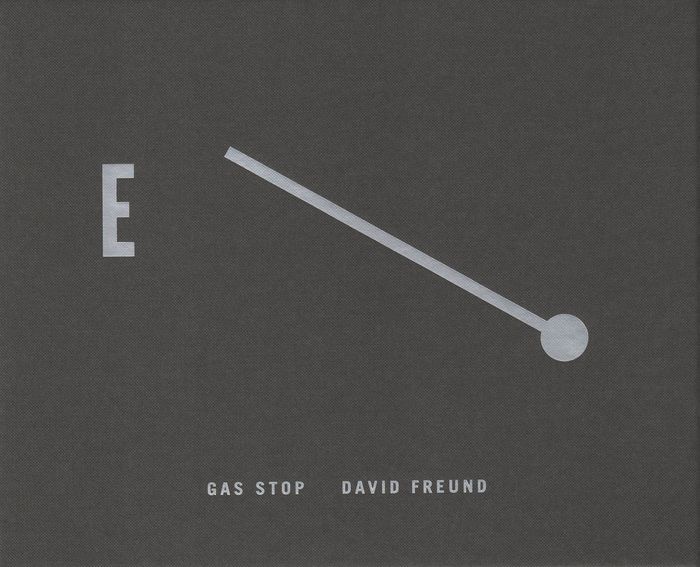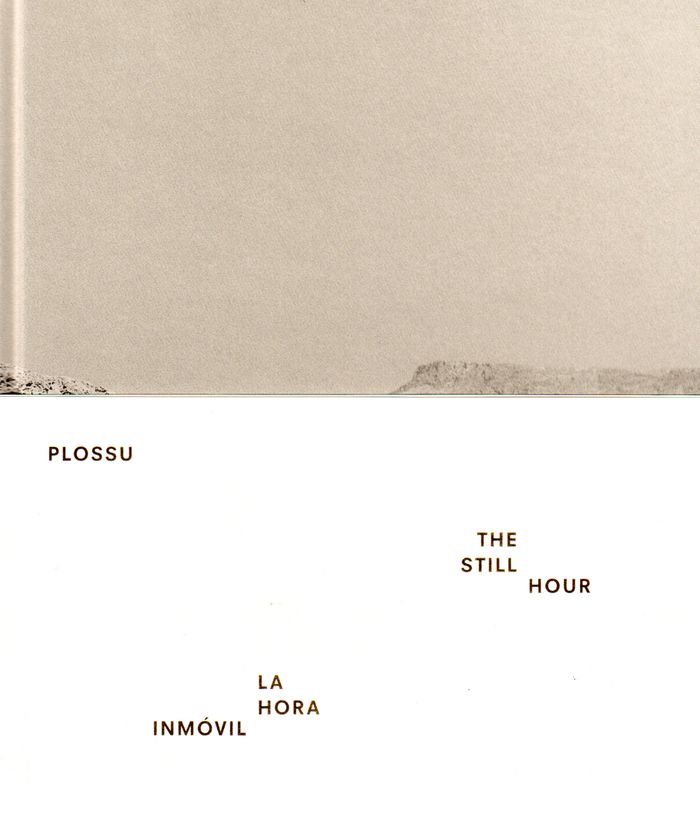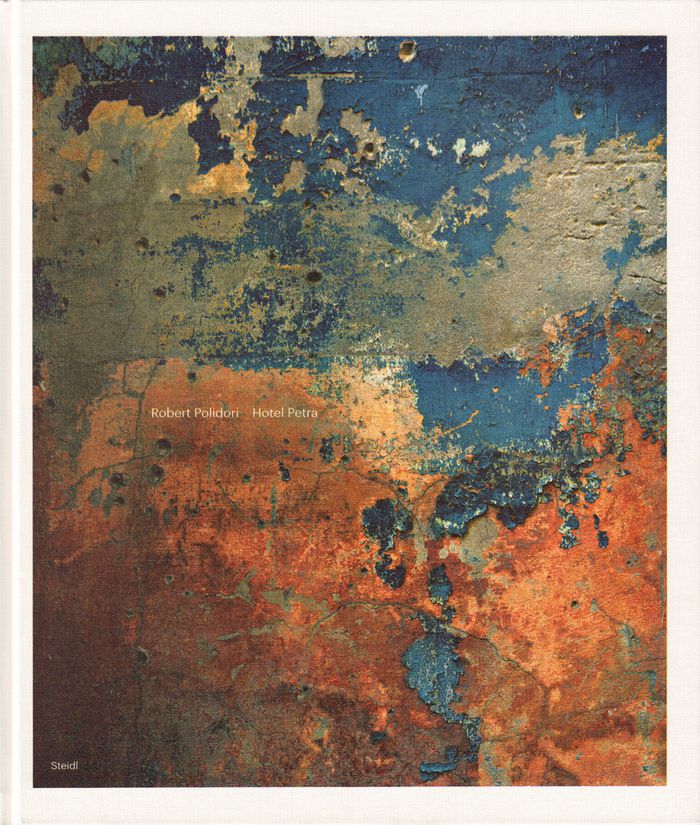$92.00
(disponible sur commande)
Résumé:
Edward Burtynsky (b. 1955) is one of a generation of photographers who seek to portray the visible outcomes of a globalized economy and humankind’s impact on environments around the world. He has achieved global recognition with his large-scale photographs and project-based monographs, such as Quarries, Oil, and Water, all of which have resulted in popular touring(...)
septembre 2016
Edward Burtynsky: essential elements
Actions:
Prix:
$92.00
(disponible sur commande)
Résumé:
Edward Burtynsky (b. 1955) is one of a generation of photographers who seek to portray the visible outcomes of a globalized economy and humankind’s impact on environments around the world. He has achieved global recognition with his large-scale photographs and project-based monographs, such as Quarries, Oil, and Water, all of which have resulted in popular touring exhibitions and, in the case of Water, a feature-length documentary film entitled Watermark. However, while Burtynsky’s global standing is without question, no comprehensive retrospective of his career to date exists.
$65.00
(disponible en magasin)
Résumé:
This publication reproduces each of the photocollages Josef Albers made at the Bauhaus, presenting the scope of this achievement for the first time. An introductory essay by Sarah Hermanson Meister situates them within the contexts of modernist photography, the Bauhaus ethos and of Albers’ own practice.
One and one is four: the Bauhaus photocollages of Josef Albers
Actions:
Prix:
$65.00
(disponible en magasin)
Résumé:
This publication reproduces each of the photocollages Josef Albers made at the Bauhaus, presenting the scope of this achievement for the first time. An introductory essay by Sarah Hermanson Meister situates them within the contexts of modernist photography, the Bauhaus ethos and of Albers’ own practice.
Monographies photo
$52.50
(disponible sur commande)
Résumé:
In 1936, science teacher turned photographer Lewis Hine was commissioned by the National Research Project, a division of the Works Project Administration, to produce a visual document of the industries that the US government hoped would provide the jobs to lift the country out of the Great Depression. Hine, already well established as a chronicler of social conditions of(...)
Lewis Hine: the national research project 1936-1937
Actions:
Prix:
$52.50
(disponible sur commande)
Résumé:
In 1936, science teacher turned photographer Lewis Hine was commissioned by the National Research Project, a division of the Works Project Administration, to produce a visual document of the industries that the US government hoped would provide the jobs to lift the country out of the Great Depression. Hine, already well established as a chronicler of social conditions of his day, produced more than 700 photographs for this project, the last major work of his career.
Monographies photo
Burt Glinn: Cuba 1959
$78.00
(disponible sur commande)
Résumé:
New Year’s Eve, 1958, 10pm: Magnum photographer Burt Glinn is at a black-tie party in New York when he hears news that dictator Fulgencio Batista has fled Cuba. By 7 am the next morning, he is in Havana in a cab, telling the driver: "take me to the revolution." Such photojournalistic fervor allowed Glinn to be in the middle of the action to capture the Cuban Revolution as(...)
Burt Glinn: Cuba 1959
Actions:
Prix:
$78.00
(disponible sur commande)
Résumé:
New Year’s Eve, 1958, 10pm: Magnum photographer Burt Glinn is at a black-tie party in New York when he hears news that dictator Fulgencio Batista has fled Cuba. By 7 am the next morning, he is in Havana in a cab, telling the driver: "take me to the revolution." Such photojournalistic fervor allowed Glinn to be in the middle of the action to capture the Cuban Revolution as it unfolded on the ground. As Glinn said, “I could get up as close as I wanted.” His magnificent photographs convey the revolutionary idealism, mayhem and excitement of that moment in history. This volume includes some of Glinn’s most iconic Cuban photographs, as well as unseen shots, in both black and white and color, from gunshots being fired, confusion on the streets, the rounding up of the Batista Secret Police, spontaneous gatherings, embracing revolutionaries returning home to mothers, and, of course, Fidel Castro’s triumphant entrance into Havana.
Monographies photo
Robert Frank: books and film
$6.50
(disponible sur commande)
Résumé:
This is the unconventional catalogue of the exhibition “Robert Frank, Books and Films, 1947–2016,” a special edition of the German newspaper the "Süddeutsche Zeitung" — following its original design and format, and printed on newsprint. Conceived by Robert Frank and Gerhard Steidl, the exhibition presents Frank’s iconic images in the context of his life, creative(...)
Robert Frank: books and film
Actions:
Prix:
$6.50
(disponible sur commande)
Résumé:
This is the unconventional catalogue of the exhibition “Robert Frank, Books and Films, 1947–2016,” a special edition of the German newspaper the "Süddeutsche Zeitung" — following its original design and format, and printed on newsprint. Conceived by Robert Frank and Gerhard Steidl, the exhibition presents Frank’s iconic images in the context of his life, creative processes, and wider cultural history. Here Frank’s books and films are seen against the backdrop of his photographs, which are presented in an immediate and straightforward way: printed on up to three-meter-long sheets of newsprint and installed directly onto the wall, without frames. The newspaper catalogue recreates the raw, innovative approach of the exhibition. Featuring interviews, essays, letters and opinion pieces alongside rich picture sequences, Robert Frank, Books and Films, 1947–2016 is an unpretentious and accessible printed object—or in Frank’s own words: “Cheap, quick and dirty, that’s how I like it!”
Monographies photo
Langdon Clay: cars
$120.00
(disponible en magasin)
Résumé:
From 1974 to 1976, Langdon Clay (born 1949) photographed the cars he encountered while wandering the streets of New York City and nearby Hoboken, New Jersey, at night. Shot in Kodachrome with a Leica and deftly lit with then-new sodium vapor lights, the pictures feature a distinct array of makes and models set against the gritty details of their surrounding urban and(...)
Langdon Clay: cars
Actions:
Prix:
$120.00
(disponible en magasin)
Résumé:
From 1974 to 1976, Langdon Clay (born 1949) photographed the cars he encountered while wandering the streets of New York City and nearby Hoboken, New Jersey, at night. Shot in Kodachrome with a Leica and deftly lit with then-new sodium vapor lights, the pictures feature a distinct array of makes and models set against the gritty details of their surrounding urban and architectural environments, and occasionally the ghostly presence of people.
Monographies photo
David Freund: gas stop
$162.50
(disponible sur commande)
Résumé:
In the twentieth century, any American driver or passenger would stop at gas stations at least weekly, and not just for gas. Gas stations were also oases offering food and drink, car repairs, directions, maps and, importantly, bathrooms. Yet, beyond their appreciation as roadside novelties, their offerings to American culture, landscape and history have been little(...)
David Freund: gas stop
Actions:
Prix:
$162.50
(disponible sur commande)
Résumé:
In the twentieth century, any American driver or passenger would stop at gas stations at least weekly, and not just for gas. Gas stations were also oases offering food and drink, car repairs, directions, maps and, importantly, bathrooms. Yet, beyond their appreciation as roadside novelties, their offerings to American culture, landscape and history have been little photographed. From 1978 to 1981, David Freund analyzed the culture, architecture and landscape of gas stations in more than forty states. The photographs show customers and workers in postures and actions peculiar to gassing up, or just hanging out. Architecture and signage, both corporate and vernacular, beckon passing drivers. Regional landscapes hold and surround gas stations, each with its own landscape of designed plantings or scrappy volunteers. Stations were also outposts for American networks other than petroleum, seen in telephone booths, mailboxes and powerlines. These and all that surrounds them spark recognition and recollection, accruing as elements of a nonlinear American narrative. While Freund’s primary concern is for his photographs to engage and surprise, he acknowledges nostalgia and uses it to imbue his subjects with a compelling sense of belonging. Of more than 200,000 gas stations in the United States at the time of this project, today they and their roles are mostly gone, existing now in memory and in this work. Four hardcover books housed in a slipcase
Monographies photo
$65.00
(disponible sur commande)
Résumé:
Born in 1945 in Dalat, South Vietnam, French photographer Bernard Plossu has traveled extensively throughout his life, immersing himself in the cultures of Chiapas in Mexico, the American West, India, the Aeolian Islands and Niger. ''Bernard Plossu: The Still Hour'' gathers 106 images taken over the course of 30 years from Plossu’s travels in the South of France, Spain,(...)
Bernard Plossu: the still hour
Actions:
Prix:
$65.00
(disponible sur commande)
Résumé:
Born in 1945 in Dalat, South Vietnam, French photographer Bernard Plossu has traveled extensively throughout his life, immersing himself in the cultures of Chiapas in Mexico, the American West, India, the Aeolian Islands and Niger. ''Bernard Plossu: The Still Hour'' gathers 106 images taken over the course of 30 years from Plossu’s travels in the South of France, Spain, Greece, Italy and Turkey. In these black-and-white snapshots, the omnipresent white light eclipses people in a visual exercise that reflects on the real dimension of landscapes and architectures; the images shape a timeless space in an almost surrealistic, dreamlike journey through time and light.
Monographies photo
Robert Polidori: Hotel Petra
$70.00
(disponible en magasin)
Résumé:
This book is Robert Polidori’s portrait of the interiors of the now demolished Hotel Petra in Beirut, a grand icon of the city’s prewar history. The Hotel Petra was once one of the most popular hotels in Beirut, conveniently located in the city center adjacent to the Grand Theatre. After the Lebanese Civil War of 1975–90, Rafiq al-Hariri founded a holding company,(...)
Robert Polidori: Hotel Petra
Actions:
Prix:
$70.00
(disponible en magasin)
Résumé:
This book is Robert Polidori’s portrait of the interiors of the now demolished Hotel Petra in Beirut, a grand icon of the city’s prewar history. The Hotel Petra was once one of the most popular hotels in Beirut, conveniently located in the city center adjacent to the Grand Theatre. After the Lebanese Civil War of 1975–90, Rafiq al-Hariri founded a holding company, Solidere, whose goal was the selective demolition and reconstruction of downtown Beirut’s urban fabric. In 1992 the Hotel Petra was set aside for later restoration, and from that moment essentially cut off from any human intervention.
Monographies photo
$57.50
(disponible sur commande)
Résumé:
Photographer and master printer Brian Young first arrived in New York City in 1984. He witnessed all the well-known ills of ‘70s and early ‘80s New York, finding the city slowly, haltingly recovering from an economic depression. Industry and manufacturing jobs had left the city, and the population continued to drain out to the suburbs. The “crack epidemic” was on the(...)
Brian Young: the train NYC 1984
Actions:
Prix:
$57.50
(disponible sur commande)
Résumé:
Photographer and master printer Brian Young first arrived in New York City in 1984. He witnessed all the well-known ills of ‘70s and early ‘80s New York, finding the city slowly, haltingly recovering from an economic depression. Industry and manufacturing jobs had left the city, and the population continued to drain out to the suburbs. The “crack epidemic” was on the front pages and on the streets. Abandoned shells of burnt-out cars littered the roads and muggings were simply a fact of daily life. Young found his camera increasingly drawn to the subway system--one of the great social levelers of life in New York City and, increasingly, the canvas for an explosive profusion of graffiti.
Monographies photo
